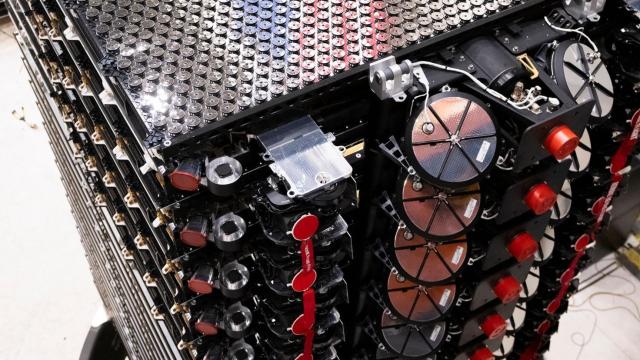SpaceX is gearing up to test its Starlink satellites’ ability to connect directly to cellphones in the U.S., launching the first six satellites under a temporary license with the hopes to expand its connectivity reach beyond that of traditional cell signals.
On Tuesday, SpaceX’s Falcon 9 rocket launched at 10:44 p.m. ET from Vandenberg Space Force Base in California, carrying 21 Starlink satellites to orbit. Of note, this batch included the first six Starlinks with direct-to-cell capabilities, according to the company.
In December, Elon Musk’s private space venture was granted approval to test direct-to-cell calls between Starlink satellites and regular mobile phones. The Federal Communications Commission (FCC) gave SpaceX a temporary license to test the new satellite technology over a duration of six months, with 2,000 test devices and 840 satellites.
The company partnered with T-Mobile, which in turn issued open invitations to various global providers. To date, five have opted in, namely Rogers in Canada, KDDI in Japan, Optus in Australia, One NZ in New Zealand, and Salt in Switzerland. The six satellites are equipped with a space-based cellular broadband network to “enable mobile network operators around the world to provide seamless global access to texting, calling, and browsing wherever you may be on land, lakes, or coastal waters,” SpaceX wrote.
The idea is to deploy veritable cellphone towers in space, eliminating the need for additional hardware on the ground to carry out a call, as well as expanding cell service in dead areas outside the range of cellular towers. The FCC is still working to develop a regulatory framework for direct-to-cell satellites, but several companies are hoping to get an early hop on the technology.
AST SpaceMobile and Virginia-based Lynk Global are also working to develop space-based cellular broadband networks directly accessible by cell phones. AST launched its prototype satellite in September 2022 (on board SpaceX’s own Falcon 9 rocket) which succeeded in making the first ever 5G phone call to a Samsung Galaxy S22 using AT&T spectrum. Lynk Global also deployed three satellites designed to deliver service from space directly to cell phones on Earth.
The Starlink satellite services will begin with text messages, while voice and data coverage are meant to follow, possibly in 2025. SpaceX would still need a license to start offering those services to its customers, according to SpaceNews.
